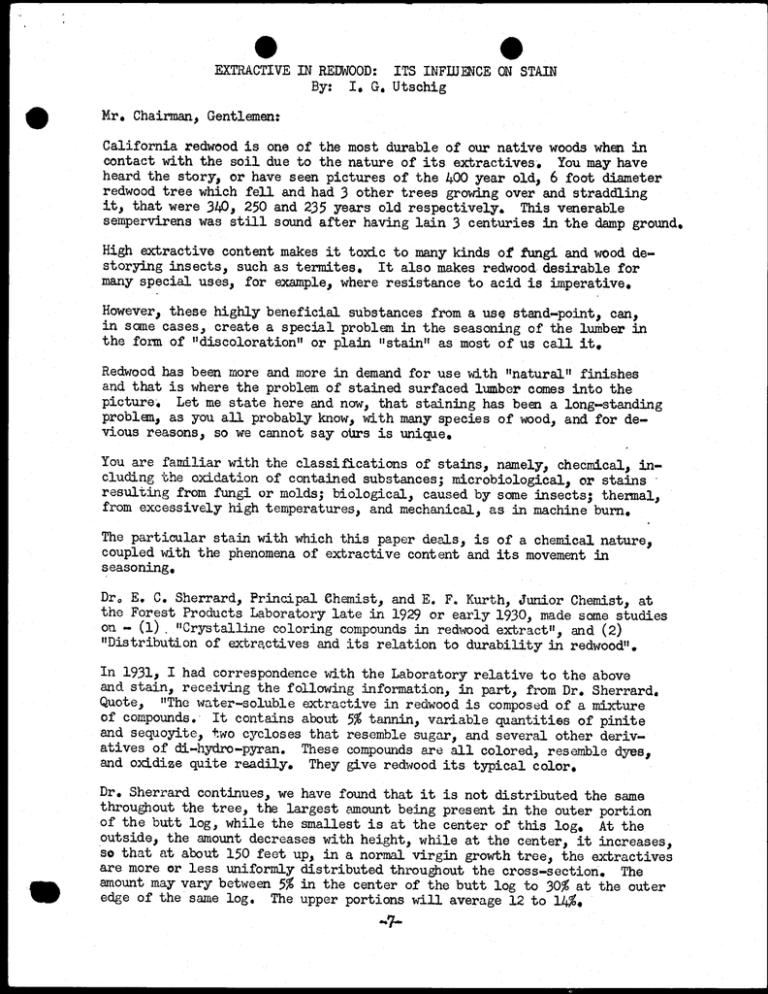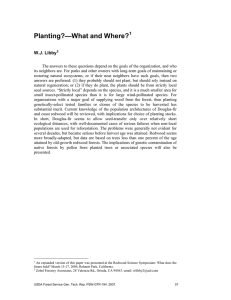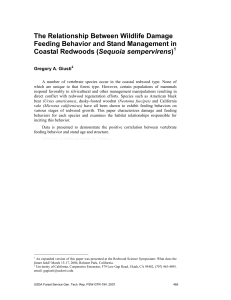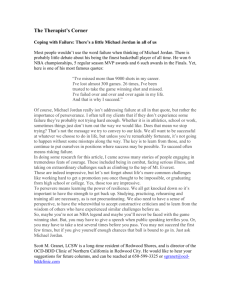•
advertisement

•
•
EXTRACTIVE IN REDWOOD: ITS INFDJENCE ON STAIN
By:
G. Utschig
Mr. Chairman, Gentlemen:
California redwood is one of the most durable of our native woods when in
contact with the soil due to the nature of its extractives. You may have
heard the story, or have seen pictures of the 400 year old, 6 foot diameter
redwood tree which fell and had 3 other trees growing over and straddling
it, that were 31O, 250 and 235 years old respectively. This venerable
sempervirens was still sound after having lain 3 centuries in the damp ground.
High extractive content makes it toxic to many kinds of fungi and wood destorying insects, such as termites. It also makes redwood desirable for
many special uses, for example, where resistance to acid is imperative.
However, these highly beneficial substances from a use stand-point, can,
in same cases, create a special problem in the seasoning of the lumber in
the form of "discoloration" or plain "stain" as most of us call it.
Redwood has been more and more in demand for use with "natural" finishes
and that is where the problem of stained surfaced lumber comes into the
picture. Let me state here and now, that staining has been a long-standing
problem, as you all probably know, with many species of wood, and for devious reasons, so we cannot say ours is unique.
You are familiar with the classifications of stains, namely, checmical, including the oxidation of contained substances; microbiological, or stains
resulting from fungi or molds; biological, caused by some insects; thermal,
from excessively high temperatures, and mechanical, as in machine burn.
The particular stain with which this paper deals, is of a chemical nature,
coupled with the phenomena of extractive content and its movement in
seasoning.
Dr. E. C. Sherrard, Principal Chemist, and E. F. Kurth, Junior Chemist, at
the Forest Products Laboratory late in 1929 or early 1930, made some studies
on - (1). "Crystalline coloring compounds in redwood extract", and (2)
"Distribution of extractives and its relation to durability in redwood".
In 1931, I had correspondence with the Laboratory relative to the above
and stain, receiving the following information, in part, from Dr. Sherrard.
Quote, "The water-soluble extractive in redwood is composed of a mixture
of compounds. It contains about 5% tannin, variable quantities of pinite
and sequoyite, two cycloses that resemble sugar, and several other derivatives of di-hydro-pyran. These compounds are all colored, resemble dyes,
and oxidize quite readily. They give redwood its typical color.
4111
Dr. Sherrard continues, we have found that it is not distributed the same
throughout the tree, the largest amount being present in the outer portion
of the butt log, while the smallest is at the center of this log. At the
outside, the amount decreases with height, while at the center, it increases,
so that at about 150 feet up, in a normal virgin growth tree, the extractives
are more or less uniformly distributed throughout the cross-section. The
amount may vary between 5% in the center of the butt log to 30% at the outer
edge of the same log. The upper portions will average 12 to 14%.
In studying how the extractives move as drying takes place, some water and
small amount of the compound starts to move toward the surface where, (1)
it concentrates and (2) is deposited as a solid (in the zone where the
water flashes into vapor), oxidizing quite rapidly under some conditions
and very slowly under others. He said that it is these two facts which
are the main cause of the particular stain we are dealing with here.
Dr. Sherrard went on to state,"Our studies have indicated that the greatest
movement of extractive is in the longitudinal direction, and least radially.
This accounts for edge grain showing more stain on the surface than flat
grain boards. Also we have noticed that upon drying, a greater amount moves
toward the sap than toward the pith surface".
Our group wished to get as much information as possible that might be helpful at the more practical level of the kiln operator and what he himself
could do about this problem of stain. So late in 1948, the Redwood Seasoning
Committee authorized a study to be made in our experimental kiln in Eureka,
California, under the direction of Mr. Byrne Manson, now with the California
Redwood Association. We will not go into the details of this investigation
other than to point out certain factors which were found to be contributory
to staining. They are,(') too high a temperature in the kiln, (2) too high
humidity, (3) too high a product of drying time and temperature, (4) too
thin stickers, (5) too wide stickers, (6) too low circulation rate, (7) too
high acid content. Acidity of the water content increases if log storage is
of long duration, (8) high extractive content, as indicated by dark color,
(9) not getting the lumber on sticks quickly enough and, (10)allowing water
to stand on the surface for too long a period at any time, whether green or
dry. For further details we refer you to "The Drying of California Redwood,
Research Report No. 1", copyrighted by . the California Redwood Association.
Recently, the Research Committee of the California Redwood Association authorized further investigation on "seasoning stain and bleeding", to be
carried on at the Forest Products Laboratory, University of California,
Berkeley, California, under the direction of Dr. Arthur B. Anderson. Copies
of this study are available to you by courtesy of the California Redwood
Association. They more or less confirm earlier investigations.
Some work has been done by Mr. Pratt and Mr. Manson of the California Redwood
Association in connection with stains, investigating the possibilities of
treating redwood chemically, before or after drying, or both, to restore
its original color, or bleach out objectionable blemishes or stains in the
finished products. To date, this has not been too promising.
Getting down to our own level, many munbers of our group have carried on
experimental work at their own plants. Specifically, we have' studied the
effect various kiln schedules, including conditioning periods, have on stain.
We found, that in sane types of kilns, changing the air as often as possible,
venting all excess vapors, reduced stain. Some operators claim the use of
certain kinds of boiler compounds in the boiler feed—water is a contributing
factor, especially during the conditioning period * Where possible, we have
put into practice the "Do's and Don'ts" which were indicated by experiments
in our research kiln, as previously stated. Better kiln design and controls
have contributed their part,
The fact that we, in the red-ood industry,, have been working on the reduction of stain for a long time and still doing so in 1953, is convincing
evidence that a complete solution will not come easily.
You men in the Western Pine industry have recently made a very thorough.
study of "brown-stain" in sugar pine and, you, like we, have run down a lot
of factors which seemingly contribute to the disease. But you too, still
have work atoied•to resolve your problem satisfactorily, according to a report presented at a meeting of Dry Kiln Clubs in Chester, California on
November 3, 1950 and a later report on the same subject by the Forest Products Research Society in June 1952.
And so I repeat, as stated in the beginning, the problem of stain from
various causes, is more or less prevalent in the lumber industry.
The control of "blue-stain" has been accomplished by proven methods, but
most of the so-called chemical stains still require further research.
By sharing our collective, up-to-the-minute knowledge, in conferences
such as this, we will hasten the day when it will be possible to reduce
all types of stains to an economic minimum.
Thank you.




